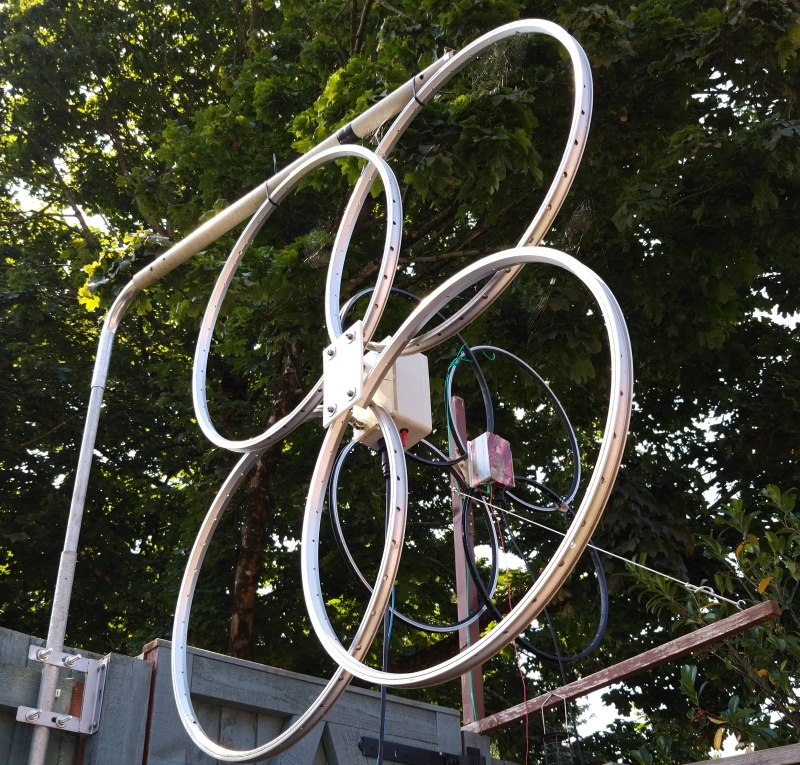Powernumpty
About
- Username
- Powernumpty
- Joined
- Visits
- 5,429
- Last Active
- Roles
- Member
- Points
- 27
-
BeagleBone AI
The only way IMHO is to have a large passive heatsink.
The copper laptop cooler I used, if left with the fan off, idles at about 60C on a cool room.
I only found this by accidentally knocking the fan supply and spotting the elevated temperature later.
The BeagelBone supplied heatsink is designed for use with a fan, it is not suitable for use without. -
Electric fence noise
https://www.arrl.org/files/file/Technology/tis/info/pdf/9604062.pdf Good place to start.
Here I find when the grass grows up to the bottom of the fence that normally will get it going but also wires twisted together or just plain corrosion.
I think it is any ark that will guarantee a broadband RF burst.
Where I could not help fix the fence the noise blanker would actually do a decent job so long as I occasionally adjusted for the battery dropping.
Stu -
Questions About the Mini-Whip Antenna
1. Yes, Mini whips can pick up a lot of noise on the feed, experiment, satellite coax like WF100 has great shielding at low cost, before I moved to WF100 generally I used coax (RG58) vertically down (7m) from the antenna then CCTV balun and CAT5 back to the house and another CCTV balun, noise here is severe. WF100 with F-type to BNC adapters is used here as the RX feed other than external CAT5 shielded.
2. The cable will feed common mode noise to the house and antenna. In my limited experience electrical probes are not the best choice for city locations unless you can get good separation, use a mag loop instead. I don't personally think a horizontal section will make a positive difference when you consider the wavelengths, but if it being horizontal also includes more distance from noise sources give it a go.
3. Linear is best, then play with voltage as you have, as it only needs a small supply so look at what people are throwing out, even ask older folk if they have some in the drawer*, gather linear psu's and test them for this use, some are better, some have old caps or lose transfomer windings. Obviously watch the light or off-load voltage, test before using them as often a 12V 1A linear may be 16-18V lightly loaded.
4. These need to be high, mainly to get away from noise, I really struggle to use them here, at least they are small enough to move around and try to get away from the QRM
5. I used as many grounds as I could but had most success seeing one part of the whip/feed as the "antenna" then everything after that needs to be grounded/shielded/buried
6. Voltage as long as you don't go over voltage I have seen surprisingly good results in noisy locations dropping it back, I even ran the current mag lops under "recommended" voltage range by about three volts seeing only marginal reduction in WSPR spot counts.
My experience is mostly through trial and error, the link below leads to some more insightful posts from others who have a better understandings of electronics and RF theory.
I did put an image on this forum on the layout I settled on before switching to LZ1AQ loops, If I find it later I'll link.
Mine was roughly 7m fibreglass mast, down to earth rod (lightning discharge) and air coil, low pass filter, cctv balun -CAT 5- cctv balun, earth rod, house Bias Tee with filters on the mains feed to linear psu.
* I am now "older" and have mostly draws of full stuff I "may use one day, too good to throw out". -
Kiwi BBAI software installation instructions [updated 4-Mar-24]
-
Kiwi BBAI software installation instructions [updated 4-Mar-24]
Looking at how close some tiny SM components are to the fixing locations some small physical revisions wouldn't hurt too.
I stuck my old laptop heatsink down and fired it up without a fan, it took a long time to do anything but gradually headed up to about 51C before I went back down to the room it is in (open no case right now) and put a 12V fan at 8V over it, back to the PC and I thought I'd messed up as it was still showing 47C.
It takes an age to change with that much copper on it, small improvements take about five minutes to fully reflect.
Should be good once I actually duct a fan for it.
Glad to hear the Odroid is working so well, I think I take advantage of that one most days.
--later--
Stuck it back in the 2U rack case, case fan only but now blowing in the same direction as the fins (distance about 2" 50mm, no ducting).
Clocked it up to 1.5GHz (don't intend to leave it there) 14 wsprdaemon channels running and it levelled out at 43/44C. the room is probably 4C colder than the 1GHz run with supplied heatsink.





